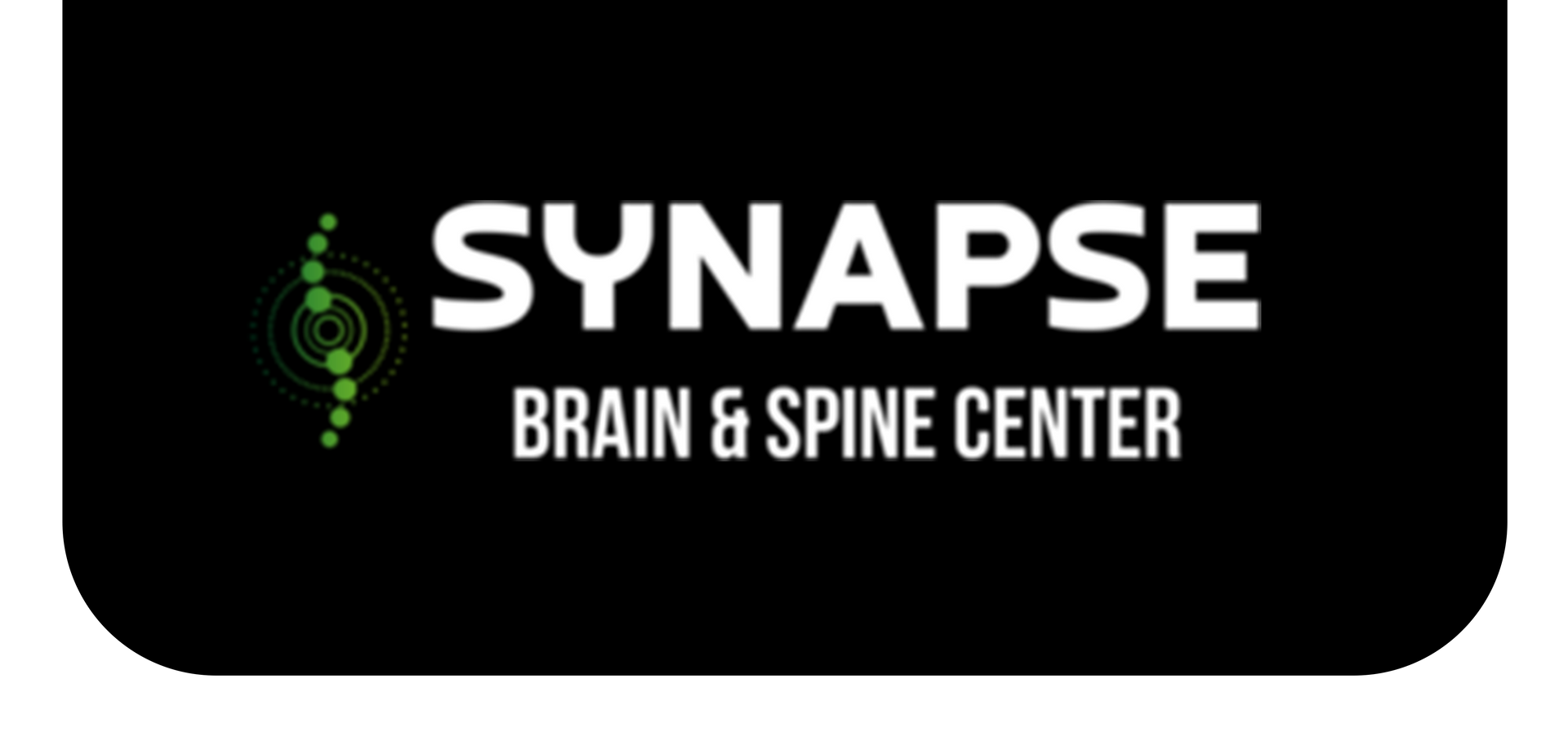Radial Shockwave Therapy at Synapse Brain & Spine Center!
7138999589 • July 28, 2025
What is Radial Shockwave Therapy?
Now Offering Radial Shockwave Therapy at Synapse Brain & Spine Center!
We’re excited to announce that Synapse Brain & Spine Center is now offering Radial Shockwave Therapy (RSWT)—a non-invasive, evidence-based treatment designed to accelerate healing, reduce pain, and improve mobility for patients with chronic and acute musculoskeletal conditions.
🌊 What Is Radial Shockwave Therapy?
Radial Shockwave Therapy uses acoustic pressure waves delivered to the surface of the skin to stimulate healing in deeper tissues. It’s especially effective for:
Plantar fasciitis and heel pain
Tennis or golfer’s elbow
Shoulder tendinopathy and calcifications
Chronic low back or neck pain
Myofascial trigger points and scar tissue
Hip, knee, or joint pain following injury
This therapy is widely used by sports medicine specialists, orthopedists, and neurologically focused practices like ours—and for good reason. RSWT helps stimulate tissue regeneration, improve blood flow, and reduce pain by targeting dysfunctional neuromuscular patterns and promoting cellular repair.
✅ Why We’ve Added RSWT to Our Care Model
At Synapse, our goal is to provide cutting-edge, drug-free solutions for chronic pain, neurological dysfunction, and injury recovery. Radial Shockwave Therapy fits perfectly into our integrative model alongside:
Hyperbaric Oxygen Therapy
Neurofeedback Therapy
Class IV Laser Therapy
Extracorporeal Magnetotransduction Therapy (EMTT)
Chiropractic Neurological Rehabilitation
By combining RSWT with these therapies, we’re seeing enhanced outcomes in patients dealing with long-standing inflammation, post-concussive symptoms, neuropathy, and orthopedic injuries.
💡 What to Expect
Quick treatment: Most sessions take 10–15 minutes.
Non-invasive: No anesthesia or downtime required.
Evidence-based: Backed by research for soft tissue and tendon injuries.
Custom-tailored: Integrated into your personalized care plan.
Whether you're recovering from an auto injury, dealing with repetitive stress, or managing nerve-related muscle tightness, RSWT can be an effective and efficient addition to your recovery journey.
📅 Schedule Your Consultation
Ready to explore whether Radial Shockwave Therapy is right for you?
📍 Visit us at Synapse Brain & Spine Center in Lewes, DE
📞 Call (302) 703-6998 or book online at www.synapsedelaware.com
Our team is here to help you move better, heal faster, and get back to living pain-free.


Seasonal Affective Disorder (SAD) and QEEG Brain Mapping: A Data-Driven Approach to Winter Depression Seasonal Affective Disorder (SAD) is a form of depression that follows a seasonal pattern, most commonly appearing during the fall and winter months when daylight exposure decreases. While SAD is often dismissed as “winter blues,” research shows it is a neurologically driven condition involving changes in brain activity, circadian rhythms, and neurotransmitter regulation. At Synapse Brain & Spine Center, we use QEEG brain mapping to objectively identify the brain-based patterns associated with SAD and guide personalized treatment strategies such as neurofeedback and integrative neurology care. What Is Seasonal Affective Disorder? Seasonal Affective Disorder is classified as a recurrent depressive disorder with a seasonal onset. Symptoms typically begin in late fall or early winter and improve in spring or early summer. Common Symptoms of Seasonal Affective Disorder Persistent low mood or depression Fatigue and low energy Brain fog and poor concentration Increased sleep or difficulty waking Carbohydrate cravings and weight gain Reduced motivation and productivity Anxiety or emotional reactivity The Brain Science Behind Seasonal Affective Disorder Reduced sunlight exposure affects the brain in several measurable ways: Disrupted circadian rhythm (melatonin and cortisol imbalance) Reduced serotonin signaling, impacting mood regulation Altered frontal lobe activity, affecting motivation and executive function Increased limbic system activation, contributing to anxiety and emotional instability These changes are not subjective—they can be measured using QEEG brain mapping. What Is QEEG Brain Mapping? Quantitative Electroencephalography (QEEG) is a non-invasive test that measures electrical activity in the brain. It evaluates how different regions communicate and compares results to age-matched normative databases. Unlike MRI or CT scans that look at structure, QEEG assesses brain function. What QEEG Measures: Brainwave speed (delta, theta, alpha, beta, high beta) Regional overactivity or underactivity Functional connectivity between brain regions Patterns associated with depression, anxiety, ADHD, and cognitive fatigue QEEG Patterns Commonly Seen in Seasonal Affective Disorder Patients with SAD often demonstrate consistent findings on QEEG, including: Frontal lobe underactivation Linked to depression, low motivation, and apathy Excess slow-wave activity (theta/alpha) Associated with fatigue, brain fog, and slowed processing speed Frontal–limbic dysregulation Contributes to mood instability and anxiety Left–right hemispheric asymmetries Frequently observed in depressive disorders These findings help explain why many individuals with SAD feel “stuck,” unmotivated, or mentally drained during winter months. Why QEEG Matters for Treating Seasonal Affective Disorder Traditional SAD treatments—such as light therapy or antidepressants—can be helpful, but they often rely on trial and error. QEEG allows treatment to be personalized and data-driven. Benefits of QEEG-Guided Care for SAD: Identifies the root neurological drivers of symptoms Guides QEEG-based neurofeedback protocols Reduces guesswork in treatment planning Objectively tracks progress over time Supports patients who do not tolerate medications well Integrative Treatment Options for SAD at Synapse Brain & Spine Center Using QEEG findings, care plans may include: QEEG-guided neurofeedback to retrain dysregulated brain networks Hyperbaric Oxygen Therapy (HBOT) to support cerebral metabolism and neuroplasticity Targeted light and photobiomodulation strategies Circadian rhythm and lifestyle optimizations This integrative approach addresses both brain function and physiological resilience, helping patients feel more stable, energized, and focused throughout the winter. Seasonal Affective Disorder Is Real—and Measurable. Seasonal Affective Disorder is not simply a mood issue or lack of motivation. It is a biologically measurable brain-state change that can be identified and treated with modern functional neurology tools. QEEG brain mapping provides: Objective validation of symptoms Insight into why winter affects your mood and energy A roadmap for personalized, effective treatment If you experience recurring winter depression, fatigue, or cognitive decline, a deeper look at brain function may be the missing piece.

Why You Should Get Your Blood–Brain Barrier Integrity Checked with the Vibrant Wellness Neural Zoomer Discover why testing your blood–brain barrier integrity with the Vibrant Wellness Neural Zoomer is essential for identifying neuroinflammation, brain fog, and cognitive decline. Learn how Synapse Brain & Spine Center in Lewes, Delaware helps restore brain health naturally. 🧠 Understanding the Blood–Brain Barrier: Your Brain’s Most Important Defense The blood–brain barrier (BBB) is a vital, semi-permeable membrane that separates your brain from your bloodstream. Its job is to protect delicate brain tissue from toxins, pathogens, and inflammatory molecules — allowing only essential nutrients and oxygen to pass through. When functioning properly, the BBB acts like an intelligent security gate. But when that gate becomes leaky or inflamed — sometimes called a “leaky brain” — harmful substances can cross into brain tissue and trigger neuroinflammation, immune activation, and even autoimmune reactivity. At Synapse Brain & Spine Center in Lewes, Delaware, we use advanced diagnostics like the Vibrant Wellness Neural Zoomer to evaluate whether your blood–brain barrier is compromised — a critical step in understanding root-cause neurological symptoms such as fatigue, anxiety, or cognitive decline. 🚨 Signs Your Blood–Brain Barrier May Be Compromised If your BBB integrity is weakened, you may experience: Persistent brain fog or difficulty concentrating Headaches and light sensitivity Mood swings, anxiety, or depression Chronic fatigue and poor sleep Autoimmune flares or worsening neurological symptoms Heightened sensitivity to mold, chemicals, or food triggers These symptoms are often dismissed as “stress” or “aging,” but in functional neurology, they are strong clues that the brain’s immune protection has been breached. 🔬 How the Vibrant Wellness Neural Zoomer Works The Vibrant Wellness Neural Zoomer is a next-generation blood test for brain inflammation and autoimmunity. Using precision peptide technology, it measures antibody reactions to more than 50 brain-specific antigens — helping identify early neuroimmune activation long before MRI or CT scans show structural changes. Key markers that reflect blood–brain barrier permeability include: S100B and Occludin/Zonulin – tight junction proteins that signal BBB breakdown Glial Fibrillary Acidic Protein (GFAP) – indicates astrocyte damage and neuroinflammation Aquaporin-4 and Myelin Basic Protein (MBP) – associated with demyelination and autoimmune reactivity α-Synuclein, Tubulin, and Neurofilament Proteins – linked to early neurodegeneration By analyzing these biomarkers, the Neural Zoomer helps determine if your immune system is attacking your own brain tissue — providing powerful insight into conditions like post-concussion syndrome, PANDAS/PANS, mold toxicity, long COVID, and neuroautoimmunity. 🧩 Why Blood–Brain Barrier Testing Is a Game-Changer in Functional Neurology Conventional neurology often focuses on imaging and symptom management. But functional neurology goes deeper — identifying why dysfunction occurs at a cellular and metabolic level. Testing your BBB integrity with the Neural Zoomer offers several clinical advantages: Detects early neuroinflammation before irreversible damage Guides personalized therapy, such as neurofeedback, HBOT, and photobiomodulation Monitors recovery from mold exposure, infections, or traumatic brain injury Validates progress in autoimmune and detoxification protocols Supports targeted nutrition — using omega-3s, flavonoids, and antioxidants to restore barrier health At Synapse Brain & Spine Center, these results allow Dr. Robert Waterson, DC DACNB CFMP, to design personalized care plans integrating QEEG brain mapping, neurofeedback, hyperbaric oxygen therapy (HBOT), and laser photobiomodulation to repair barrier integrity and calm neuroinflammation. 🌿 The Synapse Approach: Restoring Brain Health from the Inside Out Located in Lewes, Delaware, Synapse Brain & Spine Center combines cutting-edge diagnostics with technology-based neurorehabilitation. Our patients include those struggling with: Post-concussion symptoms PANDAS/PANS and anxiety Mold toxicity and chronic fatigue Post-traumatic stress and emotional dysregulation By pairing Neural Zoomer testing with functional lab work (like the Vibrant Gut Zoomer and Food Sensitivity panels), we can uncover root causes that connect the gut, immune system, and brain. This systems-based model allows us to deliver precision neurological care — improving focus, energy, and emotional stability from the ground up. 🩸 Take the Next Step: Protect Your Brain’s Gateway Your brain health begins with the integrity of its barrier. If you experience brain fog, fatigue, anxiety, or cognitive slowdown, it may be time to check your blood–brain barrier integrity with the Vibrant Wellness Neural Zoomer. Schedule a consultation at Synapse Brain & Spine Center in Lewes, Delaware to learn how advanced testing and individualized care can help you restore your brain’s clarity, calm, and resilience. 👉 Contact Synapse Brain & Spine Center | Phone: (302-200-7965) | Location: Lewes, DE

The Hidden Link Between Food Additives and Your Child’s Symptoms Why Testing Matters for Families in Lewes, Delaware If your child is struggling with unexplained headaches, fatigue, anxiety, skin rashes, or digestive issues, it’s natural to want answers. But what if the root cause isn’t a virus or infection - it’s something hidden in their daily diet? At Synapse Brain & Spine Center in Lewes, Delaware, we see many children whose symptoms stem not from a single illness, but from underlying food additive sensitivities that trigger inflammation and affect the brain and gut. What Are Food Additives — and Why Can They Cause Problems? Food additives are substances added to foods to improve flavor, color, or shelf life. While generally recognized as safe for most people, some children’s immune systems react to these compounds as if they were harmful invaders - sparking inflammation, behavioral changes, or digestive distress. Common reactive additives include: Artificial dyes – Red #40, Yellow #5, Blue #1, and others linked to mood, attention, and hyperactivity changes. Preservatives – Sodium benzoate, BHT, and BHA, which can disrupt cellular antioxidants and impact mitochondrial health. Artificial sweeteners - Aspartame and sucralose, which may alter gut microbiome balance and affect neurological regulation. Flavor enhancers and thickeners - MSG, guar gum, and carrageenan, which can irritate the gut lining and immune response. These ingredients are commonly found in snacks, cereals, juices, yogurts, and even vitamins — making them hard to identify without testing. Signs Your Child Might Be Sensitive to Food Additives Symptoms of food additive sensitivity are often delayed, appearing hours or even days after exposure. This makes them easy to overlook and difficult to associate with a specific meal. Common symptoms can include: Persistent headaches or “ice-pick” head pain Tummy aches, bloating, or alternating constipation and diarrhea Eczema, rashes, or unexplained skin irritation Fatigue or “brain fog” after eating Sleep disruption or night-time restlessness Behavioral or attention changes that mimic ADHD Increased anxiety or mood swings Because these reactions involve the immune and nervous systems, they often overlap with neuroinflammatory conditions that can affect mood, focus, and overall development. Why Testing Makes the Difference At Synapse Brain & Spine Center, we use the Vibrant Wellness Food Sensitivity Complete Panel to identify specific immune reactions to over 200 foods and additives. This advanced testing measures IgG, IgA, and complement immune responses, helping pinpoint which ingredients may be triggering inflammation in your child’s body and brain. By identifying these hidden sensitivities, we can: Develop personalized elimination plans based on lab data — not guesswork Reduce systemic and neurological inflammation Support gut repair and microbiome balance Improve focus, sleep quality, and emotional regulation Integrative Pediatric Support at Synapse Our clinic combines functional pediatric neurology, neurofeedback therapy, and nutrition-based protocols to address the root causes of symptoms — not just suppress them. When food additives and sensitivities are identified, we often see measurable improvements in: Attention and mood stability Energy and concentration Digestive comfort Sleep quality Behavior and stress tolerance This integrative approach empowers families to understand their child’s unique biology and make sustainable, evidence-based changes for long-term wellness. Take the First Step Toward Clarity If your child experiences ongoing headaches, anxiety, or fatigue, food sensitivity testing near Lewes, Delaware may reveal what their body is reacting to — and how to help them heal naturally. At Synapse Brain & Spine Center, we specialize in identifying underlying inflammatory triggers and helping families restore neurological balance and resilience. 📍 Synapse Brain & Spine Center 19413 Jingle Shell Way, Unit 2 Lewes, Delaware 19958 Call today or visit www.synapsebraincenter.com to schedule your child’s Food Sensitivity Testing Consultation.

Share On: